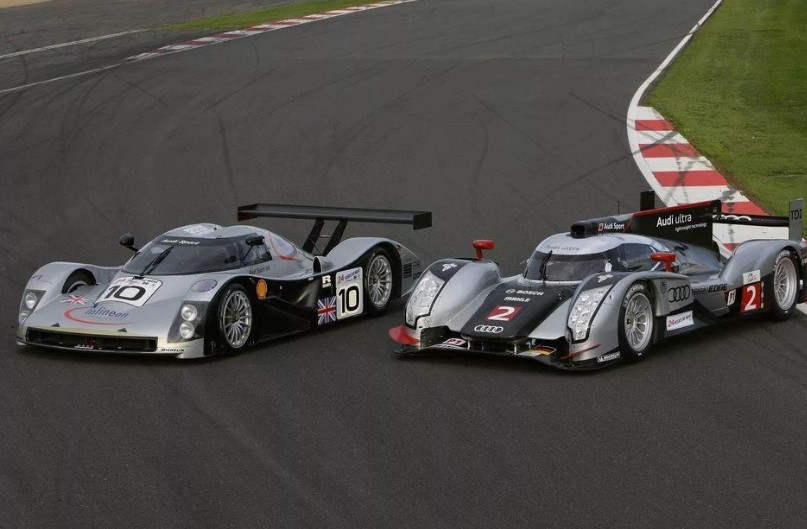Classics on New Tracks: The Evolution of Le Mans
The 24 Hours of Le Mans, held annually since 1923 near the town of Le Mans, France, is one of the most prestigious automobile races in the world. Known as the “Grand Prix of Endurance and Efficiency,” this race tests not only the speed but also the durability and efficiency of racing cars and their drivers. Over nearly a century, the Le Mans race has evolved significantly, reflecting broader changes in automotive technology, racing culture, and societal values.
Early Years (1923-1939)
Inception and the First Race
The first 24 Hours of Le Mans race was held on May 26-27, 1923, organized by the Automobile Club de l’Ouest (ACO). The idea was to create a race that would test the endurance of both the car and driver over a 24-hour period. The inaugural race was won by French drivers André Lagache and René Léonard in a Chenard & Walcker, covering a distance of 2,209 kilometers.
The Pre-War Era
The early years of Le Mans saw a variety of manufacturers participating, including Bentley, Alfa Romeo, and Bugatti. Bentley dominated the race during the late 1920s, with notable victories from drivers like Woolf Barnato and Sir Henry “Tim” Birkin. The pre-war period was characterized by rapid advancements in automotive technology and racing strategies, setting the stage for the future of endurance racing.
Post-War Resurgence (1949-1969)
Revival of the Race
After a hiatus during World War II, the 24 Hours of Le Mans resumed in 1949. The post-war era brought significant changes, including the introduction of new classes of cars and increased participation from American manufacturers like Cunningham and Corvette. The 1950s also saw the rise of Ferrari and Jaguar as dominant forces in the race.
The Tragic 1955 Race
The 1955 Le Mans race is remembered for the tragic accident that resulted in the deaths of 83 spectators and driver Pierre Levegh. This disaster led to major changes in safety regulations, not only at Le Mans but across the entire motorsport world.
Ford vs. Ferrari
The 1960s were marked by the intense rivalry between Ford and Ferrari. After being snubbed in an attempted purchase of Ferrari, Ford decided to build a car that could beat Ferrari at Le Mans. The result was the Ford GT40, which won Le Mans four consecutive times from 1966 to 1969, ending Ferrari’s dominance.
Technological Advancements and Globalization (1970-1999)
The Rise of Porsche
Porsche became a dominant force at Le Mans in the 1970s, with the iconic Porsche 917 securing their first overall win in 1970. The German manufacturer continued to excel in the 1980s with models like the Porsche 956 and 962, which became synonymous with endurance racing success.
Group C Era
The 1980s saw the introduction of the Group C regulations, which focused on fuel efficiency and aerodynamic design. This era brought about some of the most innovative and powerful race cars, including the Porsche 956/962 and the Jaguar XJR series. The Group C era is often regarded as a golden age of endurance racing due to the combination of advanced technology and fierce competition.
The Return of the Prototypes
In the 1990s, the focus shifted back to prototype racing with the introduction of the LMP (Le Mans Prototype) class. Manufacturers like Toyota, Peugeot, and Audi entered the fray, bringing with them advanced technologies and increased competition. Audi, in particular, became a dominant force, winning Le Mans eight times between 2000 and 2010 with their innovative diesel and hybrid cars.
Modern Era (2000-Present)
Technological Innovations
The 21st century has seen a continued emphasis on technological innovation, particularly in the areas of hybrid and electric powertrains. Audi’s dominance in the early 2000s was challenged by Peugeot and later by Toyota, which won its first Le Mans in 2018 and has since become a leading competitor.
Safety and Sustainability
Modern Le Mans races place a strong emphasis on safety and sustainability. The introduction of hybrid and electric technologies reflects a broader industry shift towards reducing carbon emissions and promoting sustainable practices. The race has also seen significant improvements in driver safety, with better crash protection and more stringent safety regulations.
New Challenges and the Future
The future of Le Mans promises continued innovation and excitement. The introduction of the Hypercar class in 2021 aims to bring even more advanced technology and competitive racing to the event. Manufacturers like Toyota, Ferrari, and Peugeot are already developing hypercars for this class, signaling a new era of competition.
Notable Cars and Drivers
Iconic Cars
- Bentley Speed Six (1929-1930). Known for its durability and performance, it helped Bentley secure early dominance.
- Porsche 917 (1970-1971). Revolutionized endurance racing with its power and speed.
- Ford GT40 (1966-1969). Symbol of Ford’s rivalry with Ferrari and their quest for dominance.
- Audi R10 TDI (2006-2008). Pioneered diesel technology in endurance racing.
Legendary Drivers
- Jacky Ickx. Six-time Le Mans winner known for his versatility and skill.
- Tom Kristensen. Record nine-time winner, earning the nickname “Mr. Le Mans.”
- Derek Bell. Five-time winner, often associated with Porsche’s success.
Cultural Impact
Le Mans has transcended the world of motorsport to become a cultural icon. The race has been immortalized in films such as “Le Mans” (1971) starring Steve McQueen, and more recently in “Ford v Ferrari” (2019), which brought the epic rivalry to a new generation of fans. The race continues to inspire documentaries, books, and video games, contributing to its lasting legacy.
Conclusion
The 24 Hours of Le Mans stands as a testament to the enduring spirit of competition, innovation, and human resilience. From its humble beginnings in 1923 to its current status as a global motorsport phenomenon, Le Mans has continually pushed the boundaries of what is possible in automotive engineering and endurance racing. As the race evolves with new technologies and challenges, it remains a pinnacle of achievement for manufacturers and drivers alike, symbolizing the relentless pursuit of excellence on the world stage.

